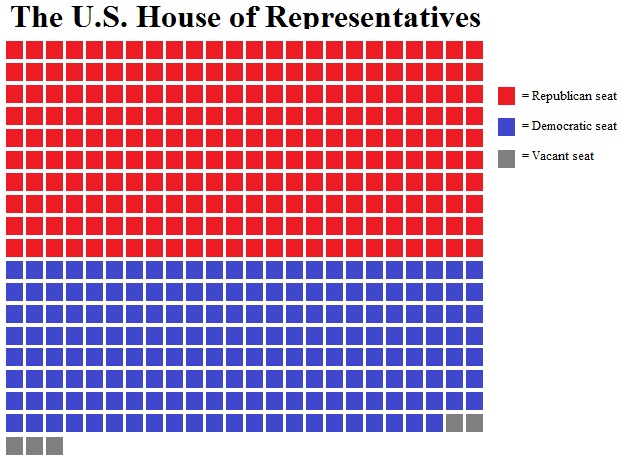Democrats have little chance of taking back the U.S. House this November, say political experts.
“I think the odds are slim,” said Paul Herrnson, a Congressional elections expert at the University of Maryland and director of the Center for American Politics and Citizenship. He considers 60 to 80 seats to be in competitive races across the country.
All 435 U.S. House seats are up for election on Nov. 6. In 2010, the Republican Party gained 63 seats to recapture the majority. The number of seats needed for a majority in the House is 218.
Now Democrats will only chip away at the Republicans’ 50-seat advantage in the House, some experts predict. The best chance for Democrats would be if President Barack Obama opens up a “huge lead” over Mitt Romney, Herrnson said. If, he added, “Democrats become very excited, it could help.”
But Democrats still face an uphill climb. Consider the numbers:
- The Republicans hold 240 seats while the Democrats hold 190. There are five vacancies from four resignations and one death.
- At least 23 seats are considered toss-ups, with Republicans holding 13 of them, according to RealClearPolitics, a Chicago-based polling-data aggregator.
- Among the toss-ups are three districts in New York held by Democrats. That includes the 1st, 21st and 27th Congressional Districts.
- In another closely watched race, the 24th Congressional District is leaning toward the Democratic Party, according to multiple polls. That race is a rematch featuring U.S. Rep. Ann Marie Buerkle, R-Onondaga Hill, and Democrat Dan Maffei of DeWitt.
Bruce Oppenheimer, a Congressional elections scholar at Vanderbilt University, sees Republicans as still having the advantage. More districts across the country lean Republican than Democratic, he said.
Oppenheimer considers between 30 to 40 seats to be in play. He predicts Democrats will pick up a handful of seats but nowhere near enough to regain the majority. At best, Oppenheimer said, the Democrats will grab six to seven seats in the House.
In New York, Oppenheimer said, the seats most likely to change include the 1st Congressional District in Long Island, the 11th in Staten Island, the 24th in Central New York and the 27th Congressional District in Western New York. The 27th Congressional District includes most of Erie County and several Monroe County towns. Republican Chris Collins is challenging U.S. Rep. Kathy Hochul, D-Amherst.
Campaign strategy and tactics, Oppenheimer said, are likely to have more effect on the outcome of the Congressional races nationwide.
“You have to realize that in competitive Congressional races, campaigns will often make a difference more than in competitive presidential races,” he said. “A presidential election is kind of like World War I. The two sides are in their trenches, throwing stuff at each other and occasionally charging. But you’re not moving the battlefield very much. Competitive House and Senate elections tend to allow you to move the battlefield more easily.”
Jeffrey Stonecash, a political scientist at Syracuse University, doesn’t expect the Democrats to retake the House. But, Stonecash said, he isn’t writing them off yet.
The reason is because he expects those who didn’t turn out to vote in 2010 to return to the polls in November. “There were these 45 million fewer people who voted in 2010 compared to 2008,” Stonecash said. “They’re going to come back. They’re younger, poorer, non-white. They’re more likely to vote Democratic.”
In 2010, more than 50 Republicans who nabbed a seat won with less than 55 percent of the vote, he said. That means those incumbents are vulnerable this year, Stonecash said.
“It wouldn’t take much,” he said, “to move the vote against a lot of them.”
(Jon Harris is a senior with dual majors in magazine journalism and political science.)
-30-



